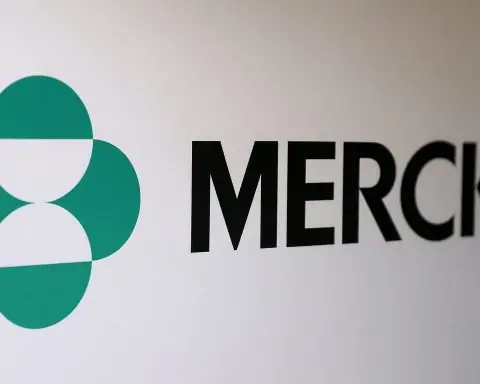- Shares Jump on Big Contract: ProPetro Holding Corp.’s stock surged nearly 14% this week after its PROPWR division secured a long-term deal to supply 60 megawatts of power to a major hyperscale data center [1]. Investors cheered the diversification, driving PUMP to around $7.30 by Oct. 29, 2025 – roughly 40% higher than a month ago [2] [3].
- Stronger-Than-Expected Q3 Results: The Midland, Texas-based oilfield services firm reported Q3 2025 revenue of ~$294 million (down ~18.6% year-over-year) and an adjusted net loss of $2 million (-$0.02 per share). Both metrics beat Wall Street estimates by a wide margin [4], with revenue topping forecasts by 14% and EPS beating by $0.09.
- Operational Highlights: ProPetro narrowed its loss from Q2’s $7 million as cost controls and higher contracted work kicked in [5] [6]. Free cash flow from its core completions (fracking) segment was $25 million in Q3, totaling $92 million year-to-date [7]. The company now has seven frac fleets under long-term contract (~70% of its horsepower) for greater stability [8].
- Pivot to Power Generation: Through its new PROPWR unit, ProPetro is expanding beyond traditional fracking. It deployed its first field power assets in Q3 and grew total contracted capacity above 150 MW, with plans for 220 MW by year-end [9]. The recent 60MW data center contract marks its entry into that high-demand market [10]. ProPetro even inked a $350 million financing facility to scale PROPWR projects, targeting 1 gigawatt of capacity by 2030 [11] [12].
- Analysts Cautious but Watching PROPWR: Despite the stock’s rally, some experts urge caution. Zacks Investment Research rates PUMP a “Sell” (Rank #4) in the near term [13], and Barclays recently cut its 2025 EBITDA forecast to ~$181 million amid industry headwinds [14]. However, observers note that the new PROPWR business – with its steady, higher-margin data center power contracts – could “offset some of the volatility in traditional oilfield services” if executed well [15].
- Oilfield Slowdown Context: 2025 has been tough for U.S. fracking specialists. Oil prices hovering near $60/barrel and sharply lower drilling activity squeezed shale service providers [16]. ProPetro’s stock was down ~37% year-on-year before the latest rebound [17], a plunge similar to rival Liberty Energy’s ~40% drop. In contrast, diversified peers with international exposure like Halliburton and Schlumberger only fell ~10% over the same period [18] [19]. This highlights how ProPetro’s pure-play North American focus made it vulnerable – and why its pivot to new markets is drawing interest.
Stock Rallies on Data Center Deal and Earnings News
ProPetro’s shares have been on a tear this week, buoyed by a one-two punch of bullish news. On Monday (Oct. 27), the stock jumped nearly 19% intraday after the company announced a breakthrough power supply contract with a Midwest data center operator [20]. The deal, made through ProPetro’s PROPWR division, commits the company to provide 60 MW of on-site electricity via a hybrid system of natural gas generators plus battery storage [21]. This is a significant strategic win – it establishes ProPetro as an energy supplier to a leading data infrastructure player, a departure from its traditional oilfield service niche. “This agreement showcases our commitment to delivering cutting-edge, dependable power solutions tailored to the evolving demands of data center infrastructure,” said Travis Simmering, President of PROPWR [22]. Dave Bosco, a PROPWR vice president, noted the client was especially keen on the combination of gas turbines with battery storage for resiliency [23].
The market’s reaction was emphatic. By the close of trading Monday, ProPetro’s stock was up roughly 14% on the news, reflecting investor enthusiasm for the company’s expansion into the booming data center power market [24]. The rally carried into midweek as ProPetro followed up with better-than-expected quarterly earnings on Wednesday, October 29. The stock traded around $7.30 – its highest in months – after the earnings release [25]. That’s about a 40% gain over the past month [26], signaling a sharp reversal of fortune for PUMP after a year of lagging performance. While still well below its peaks from prior years, the recent surge suggests traders are growing more optimistic about ProPetro’s direction heading into 2026.
Q3 2025 Earnings: Narrower Loss and Revenue Beat
ProPetro’s third-quarter results, reported before the market opened on Oct. 29, provided further reason for optimism. Revenue came in at $293.9 million for Q3 2025, down 18.5% from a year ago but significantly above analyst estimates of about $258 million [27] [28]. The top-line beat (a +14% surprise) indicates that ProPetro’s activity held up better than expected despite a sluggish fracking environment. On the bottom line, the company essentially broke even – posting a small net loss of approximately $2 million, or -$0.02 per share [29] [30]. This was a marked improvement over the prior quarter’s $7 million loss (–$0.07 per share in Q2) [31]. It also trounced the consensus forecast, which had predicted a deeper $0.11 per-share loss [32]. In fact, the EPS beat was over 80% better than expected [33].
Several factors drove the improved results. Cost of services declined as ProPetro scaled back some excess capacity and benefited from higher fleet utilization under long-term contracts. The company’s adjusted EBITDA for Q3 was $35 million (about a 12% margin) [34] [35] – down from $50M in Q2 due to slightly lower activity, but still representing a solid double-digit margin in a tough market. Notably, ProPetro continued to generate positive free cash flow from its core “Completions” (pressure pumping) business, thanks to disciplined spending. Management reported $25 million in free cash flow from completions during Q3, bringing year-to-date 2025 free cash generation in that segment to $92 million [36]. This helped fund ongoing investments without straining the balance sheet.
CEO Sam Sledge lauded the quarter as “resilient” given the headwinds in the oilfield. “Our completions business continues to generate reliable free cash flow, supported by disciplined execution, operational excellence, and effective cost management,” Sledge commented [37]. He noted that the broader Permian Basin market remains challenging, but stressed that ProPetro is “controlling what we can control” and making strategic moves (like PROPWR and electric frac fleets) to weather the turbulence [38]. The company’s focus on a “capital-light” model – meaning renting or leasing equipment where possible and avoiding heavy new builds – has helped maintain liquidity and margins [39] [40].
Wall Street appeared encouraged by these numbers. The better-than-feared earnings suggest ProPetro’s downsizing and efficiency efforts are paying off. In the past year, U.S. shale service providers have been battered by lower drilling volumes and pricing pressure, so any upside surprise stands out. ProPetro’s Q3 revenue was actually higher than in Q2 (despite industry activity dipping in late summer), and the narrower loss hints that the company might be nearing a break-even or profitable run-rate going forward. Still, some metrics were soft – revenue was ~19% lower than Q3 a year ago [41], reflecting how much the fracking boom has cooled. Adjusted EBITDA also fell about 29% year-over-year [42]. Management attributed the declines largely to lower fleet utilization (ProPetro had already signaled it would idle some frac fleets in the second half due to weaker demand [43]). Even so, by aggressively aligning capacity with demand and locking in clients to contracts, ProPetro managed to outperform the low bar set by analysts this quarter.
Pivoting Beyond Fracking: PROPWR’s Growth and Significance
A major theme in ProPetro’s narrative now is diversification – specifically, its expansion into power generation through the PROPWR division. This quarter’s developments show PROPWR rapidly gaining momentum. In Q3, ProPetro deployed its first PROPWR equipment in the field and “observed excellent operational efficiency,” according to the company [44]. More importantly, PROPWR achieved several growth milestones: total contracted power capacity surpassed 150 MW by the end of Q3, and the unit has equipment orders for 360 MW of generation (to be delivered by early 2027) [45] [46]. The long-term vision is to reach 1 gigawatt (1,000 MW) of installed capacity by 2030 by serving both oilfield customers (e.g. powering remote drilling sites) and big energy users like data centers [47].
The new 60 MW data center contract announced on Oct. 27 is a prime example of this strategy bearing fruit. That deal will see ProPetro provide a hybrid power solution (gas-fired generators plus battery storage) to support a large data center’s electricity needs, with deployment slated for Q2 2026 [48]. Not only does it open a new revenue stream for ProPetro, but such contracts tend to be multi-year and higher-margin than spot market fracking jobs. In the data center world, uptime and reliability are paramount – and providers are willing to pay for secure power. ProPetro’s PROPWR offering aims to capitalize on that, pitching “reliable, lower-cost, lower-emission power solutions” to industry and infrastructure clients [49]. This pivot comes at a time when a boom in artificial intelligence is fueling voracious power demand from tech companies. Power generators and turbines, which keep data centers running, have become a dominant driver for equipment firms as AI infrastructure builds out globally [50]. By leveraging its energy know-how in this adjacent market, ProPetro is tapping into a secular growth trend that’s somewhat insulated from oil price swings.
To accelerate PROPWR’s scale-up, ProPetro also announced a creative financing move: it has lined up an $350 million lease financing facility with an investment-grade partner [51] [52]. This facility, expected to close by year-end, will let ProPetro lease or finance power generation units without huge upfront capital outlays. Essentially, it’s an “on-demand” credit line to fund PROPWR projects as contracts are signed. CFO Caleb Weatherl said this gives the company flexibility to grow PROPWR while “preserv[ing] a healthy balance sheet,” noting that external capital is “essential for the meaningful expansion of our power generation business” in light of the limited free cash flow from core operations [53]. The approach mirrors how renewable energy projects are often financed off-balance-sheet. It should help ProPetro avoid over-leveraging, since they can draw funds gradually per project. However, it also underscores that PROPWR, while promising, will require substantial investment before it materially boosts earnings. Management is effectively betting that these projects will pay off over the long term with steady returns.
Industry Backdrop: Oilfield Slowdown and Competitive Landscape
ProPetro’s strategic shift comes against the backdrop of a weak oilfield services environment in 2025. North American drilling and completion activity have slumped sharply this year, squeezed by lower oil prices and producer spending cuts. Brent crude has hovered around just ~$60–62 per barrel in recent weeks [54], compared to $80+ a year ago. That price softness, coupled with fears of oversupply, led many exploration & production (E&P) companies to rein in their budgets. U.S. rig counts and well completions fell markedly, directly squeezing demand for pressure pumping services like ProPetro’s [55].
As a result, shale-focused service providers have seen their stocks and earnings tumble in 2025. Liberty Energy (LBRT), one of ProPetro’s primary peers, had plunged over 40% year-to-date before a recent bounce [56]. ProPetro itself was not far behind – its share price was down roughly 37% over the past 12 months prior to the latest rebound [57]. This decline vastly outpaced the broader energy sector (which was only down ~4% over the same period) and even the overall oilfield services sub-industry (down ~13%) [58]. The disparity highlights how concentrated exposure to the U.S. shale patch made companies like ProPetro and Liberty much more vulnerable than diversified oilfield giants. By contrast, larger rivals Halliburton and Schlumberger, which have international and offshore projects, saw their stocks dip only ~10% or less amid the downturn [59] [60]. Their global footprint helped cushion the blow, as oil investment held up better overseas.
The competitive dynamics within fracking services have also been brutal. An oversupply of equipment – especially older diesel frac fleets – has led to “unconstructive” pricing behavior among peers, Liberty’s management complained recently [61]. Essentially, too many players were chasing fewer jobs, driving prices down to break-even levels. ProPetro has tried to differentiate by upgrading to dual-fuel and electric fleets (its new FORCE℠ electric frac fleet initiative) and by securing long-term contracts with key customers. About 70% of ProPetro’s active horsepower is now locked into dedicated agreements [62], which insulates it from short-term price wars and idle time. This approach appears to be helping – one analysis noted that “ProPetro…communicated more stable utilization trends” in Q3 versus Liberty, thanks to better fleet management and contract structures [63]. In other words, ProPetro kept its crews busier and at more predictable rates, whereas some competitors had equipment sitting idle or had to discount heavily to win work.
Another challenge has been the need to scale down during the slump. ProPetro plans to shrink its frac fleet count to around 10–11 active spreads (from 13–14 earlier in 2025) to match lower demand [64]. Liberty and others are similarly retiring older fleets. While painful, this capacity rationalization could set the stage for better supply-demand balance if drilling picks up again. It’s worth noting that, despite the turmoil, ProPetro’s execution has earned a measure of credibility. In Q3, it managed an adjusted EBITDA margin of roughly 11.9% [65] [66], which actually outpaced the average margins in many oilfield segments (around 7–9% this year). This suggests ProPetro is running leaner and extracting more profit from each revenue dollar than some peers, even if overall profits are slim. By comparison, Liberty’s adjusted EBITDA was near breakeven last quarter before a one-time gain [67], and other smaller frackers struggled to stay in the black.
Looking at peers: Halliburton (HAL) and Schlumberger (SLB, now rebranded as “SLB”) remain the behemoths in pressure pumping and oilfield services. Both reported year-over-year revenue declines in their North American units this year, but growth internationally. ProPetro, being purely domestic, doesn’t have that luxury. However, its small size can be an advantage in pivoting quickly. The company’s market cap is around $750 million [68], vs. tens of billions for Halliburton and SLB. That means PUMP is a “small oil stock” that can potentially grow faster (or be more agile in new ventures) if it finds a formula that works – an aspect noted by industry observers as it “figures out the data center game” [69]. There’s even speculation that if PROPWR’s power projects succeed, ProPetro could evolve into more of a hybrid energy infrastructure firm rather than just a frack contractor [70].
Analyst Views, Technical Trends, and Outlook
Despite recent positive developments, analyst sentiment on ProPetro is mixed. The stock’s swift rise has caught some by surprise, but many analysts remain guarded given the volatile fundamentals. Zacks currently assigns ProPetro a Rank #4 (Sell), implying it expects PUMP to underperform in the near term [71]. The cautious stance likely reflects the still-muted earnings outlook – even after beating estimates, ProPetro is essentially at breakeven and faces a soft market for its core services. Similarly, Barclays analysts recently revised their forecasts and now project about $181 million in EBITDA for 2025, down from prior estimates [72]. That downgrade came amid the Q2/Q3 slump and suggests Barclays sees only a modest rebound next year. The firm has noted margin pressure and the slow pace of improvement, though it acknowledges that PROPWR offers a potential upside wildcard [73] [74].
On the bullish side, some observers argue that the market may be underestimating ProPetro’s transformation. The successful execution of the PROPWR strategy could significantly boost future earnings quality, given power contracts’ steadier nature. “ProPetro’s diversified revenue streams and capital-light model position it to outperform peers in the medium term,” one analysis noted, while warning that the success of PROPWR will be critical to that thesis [75]. In other words, if ProPetro can hit its target of 1 GW of deployed capacity by 2030 and secure enough contracts, it might command a higher valuation more akin to an energy infrastructure player than a cyclical oilfield company. For now, that remains a long-term vision – much of PROPWR’s capacity is still in development, and major revenue contributions may be a couple of years out.
From a technical analysis perspective, ProPetro’s stock has clearly broken out of its downtrend in October. Shares hit a 52-week low around the mid-$4 range earlier in 2025 amidst the frackdown, but the recent string of good news has propelled PUMP back above key moving averages. The stock’s 39% gain in the past month far outpaced the S&P 500’s ~3.8% rise [76], indicating strong relative strength. Trading volumes also spiked on the rally days, suggesting real conviction behind the move. That said, PUMP is still trading at only around half of its levels from early 2022, so longer-term trend lines remain subdued. Technical traders will be watching if the stock can hold above the $7 level (roughly where it trades post-earnings) and possibly make a run toward the next resistance around $8–$9. If momentum fades, support may lie in the mid-$6 range. The “Top Gainer” status PUMP earned this week [77] could attract some short-term traders, but sustained upside likely hinges on continued fundamental improvements.
Looking ahead, ProPetro’s near-term fortunes will depend on both macro and company-specific factors. On the macro side, any recovery in oil and gas activity – for instance, if OPEC+ actions or rising demand push oil prices higher – would directly benefit ProPetro’s core completions business. More fracking jobs at better pricing would shore up revenues and profits. Conversely, if oil stays around $60 or dips further, E&Ps are likely to remain cautious on spending, limiting any significant uptick for U.S. oilfield services. Investors will also keep an eye on labor and equipment costs (inflation in diesel, steel, etc., can squeeze service margins) and potential regulatory moves affecting drilling on federal lands or emissions from fracking.
Company-specific, a few key catalysts and risks stand out. First, execution of the new data center power contract will be crucial – successful delivery could lead to follow-on deals (management said it is “actively negotiating additional long-term contracts” amid rising demand for low-emission power [78]). PROPWR has also reportedly signed letters of intent with other customers and even an agreement for 80 MW with a Permian operator earlier in the year [79], indicating a pipeline of opportunities. Each new contract win could be a positive catalyst for the stock, as it validates the growth story. Second, ProPetro’s cost discipline and cash management bear watching. The company has about $158 million in liquidity as of Q3 (cash plus untapped credit) [80], and the new financing facility will help, but it must be prudent in capital deployment. The CFO emphasized maintaining a “strong cash and liquidity position” to navigate market swings [81] [82]. If PROPWR expansion overruns budgets or if core operations unexpectedly burn cash, it could strain the balance sheet. So far, ProPetro has avoided taking on substantial debt (it has no long-term debt on record, focusing instead on leasing and operating cash flow), which is a positive in a high-interest-rate environment.
Another consideration is market consolidation. With valuations depressed until recently, there has been speculation that smaller players like ProPetro could become acquisition targets or seek mergers to gain scale. While no specific M&A rumors are confirmed, any moves by larger oilfield service firms in the Permian could involve PUMP’s name. On the flip side, ProPetro itself acquired Pioneer Natural Resources’ pressure pumping assets a few years ago, and could eye smaller bolt-on deals if opportunities arise – though the focus now appears to be organic growth in new areas.
Finally, investors should remain aware of the risks inherent in ProPetro’s business. The company operates in a cyclical sector, historically characterized by booms and busts tied to commodity prices. It’s also an industry facing long-term transition challenges: pressure to reduce carbon emissions and the rise of renewable energy could gradually limit fossil fuel development, affecting fracking demand. ProPetro’s answer to this has been to modernize its fleet (e-frac, dual-fuel) and pivot into cleaner power supply (PROPWR), essentially hedging its bets. If successful, these moves position the company for a more resilient future. If not, ProPetro could remain at the mercy of the next downturn.
Bottom Line: ProPetro is attempting to reinvent itself amid an oilfield slump – and the early results are promising. A headline-grabbing data center power deal and an earnings beat have injected new life into the stock, making PUMP one of this week’s standout gainers. The company’s core fracking unit is holding the line with steady contracts and cash flow, while the budding power division offers a glimpse of potential new growth markets. Still, skepticism from some analysts persists, underscoring that challenges aren’t completely behind the company. In the coming quarters, all eyes will be on execution: converting PROPWR’s pipeline into profitable projects, maintaining financial discipline, and navigating whatever the commodity cycle brings. If ProPetro can deliver on those fronts, it may continue to “outperform” in its niche [83] – and perhaps chart a path from being just another fracker to becoming a broader energy solutions player for the long haul.
Sources: ProPetro Press Release (Q3 2025) [84] [85]; Investing.com News [86] [87]; StockTitan Financial Data [88]; Zacks/FinViz Earnings Report [89] [90]; TS² / Liberty Energy Analysis [91] [92]; AInvest Analyst Commentary [93] [94].
References
1. www.investing.com, 2. finviz.com, 3. www.stocktitan.net, 4. finviz.com, 5. ir.propetroservices.com, 6. ir.propetroservices.com, 7. ir.propetroservices.com, 8. ir.propetroservices.com, 9. ir.propetroservices.com, 10. ir.propetroservices.com, 11. ir.propetroservices.com, 12. ir.propetroservices.com, 13. finviz.com, 14. www.ainvest.com, 15. www.ainvest.com, 16. ts2.tech, 17. finviz.com, 18. ts2.tech, 19. finviz.com, 20. www.investing.com, 21. www.investing.com, 22. www.investing.com, 23. www.investing.com, 24. www.investing.com, 25. www.stocktitan.net, 26. finviz.com, 27. finviz.com, 28. finviz.com, 29. ir.propetroservices.com, 30. ir.propetroservices.com, 31. ir.propetroservices.com, 32. finviz.com, 33. finviz.com, 34. ir.propetroservices.com, 35. www.ainvest.com, 36. ir.propetroservices.com, 37. ir.propetroservices.com, 38. ir.propetroservices.com, 39. ir.propetroservices.com, 40. www.ainvest.com, 41. finviz.com, 42. www.ainvest.com, 43. www.stocktitan.net, 44. ir.propetroservices.com, 45. ir.propetroservices.com, 46. ir.propetroservices.com, 47. ir.propetroservices.com, 48. www.investing.com, 49. www.stocktitan.net, 50. www.indexbox.io, 51. ir.propetroservices.com, 52. ir.propetroservices.com, 53. ir.propetroservices.com, 54. ts2.tech, 55. ts2.tech, 56. ts2.tech, 57. finviz.com, 58. finviz.com, 59. ts2.tech, 60. ts2.tech, 61. finviz.com, 62. ir.propetroservices.com, 63. finviz.com, 64. www.stocktitan.net, 65. www.ainvest.com, 66. www.ainvest.com, 67. ts2.tech, 68. www.stocktitan.net, 69. muckrack.com, 70. www.ainvest.com, 71. finviz.com, 72. www.ainvest.com, 73. www.ainvest.com, 74. www.ainvest.com, 75. www.ainvest.com, 76. finviz.com, 77. www.stocktitan.net, 78. ir.propetroservices.com, 79. www.stocktitan.net, 80. seekingalpha.com, 81. ir.propetroservices.com, 82. ir.propetroservices.com, 83. ir.propetroservices.com, 84. ir.propetroservices.com, 85. ir.propetroservices.com, 86. www.investing.com, 87. www.investing.com, 88. www.stocktitan.net, 89. finviz.com, 90. finviz.com, 91. ts2.tech, 92. ts2.tech, 93. www.ainvest.com, 94. www.ainvest.com








